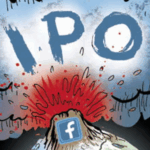Fragmentation is to the buy side what agita is to a stomach: upsetting.
“Data is perhaps the most important asset we have as an advertising agency,” said Mauricio Sabogal, global CEO of WPP’s Kinetic Worldwide, during the Modern Marketing Summit at the Mobile World Congress on Monday in Barcelona. “There are too many companies managing the data.”
Too many companies – walled gardens included – contribute to the problem, said Louis Paskalis, senior VP of enterprise media planning, investment and measurement at Bank of America.
Although the various gardens have been making overtures to openness – Facebook recently agreed to a Media Rating Council audit, as did Google, which will use the MRC to review YouTube’s measurement partners – that doesn’t address what Paskalis called the need for more data sharing.
“As an industry we need to challenge the walled gardens and ask, ‘How are you adding value?’” Paskalis said. “Why are intermediaries standing in between us and the data we’re catalyzing.”
His cry for more transparency, consistency and clarity echoes that of P&G Chief Brand Officer Marc Pritchard, who called out the overall crappiness of the supply chain.
Leonid Sudakov, president of connected solutions at Mars Inc.’s Petcare division, said the real takeaway from Pritchard’s outburst is that clients should be more active in guiding their own destiny and not as fixated on “the next cool thing.”
“Clients need to come together and talk about effectiveness in better ways and as a result have much better conversations with the media owners,” Sudakov said.
Being more involved also includes “crawling through the stack” looking for redundancies and questioning which vendors still deserve a spot in the chain. The vendor community is on notice, Paskalis said.
“We’ve all seen our own individual Luma charts,” he said. “It seems like a semi-permanent membrane – ad tech vendors check in, but they never really check out.”
Some brands are starting to demonstrate an appetite, or perhaps more accurately the intestinal fortitude required, to get more directly involved with decisions about data. Bank of America, for example, is looking to hire a creative technologist, someone comfortable working with data science, media, technology and creatives.
And Paskalis spends about 70% of his time working directly with Bank of America’s chief analytics officer and CTO on personalization initiatives that combine first- and third-party data for as single a view of the customer as possible without more access to cross-channel data.
However, getting to the point where the focus is on personalization rather than transactions requires a major mindshift, especially for a large brand that’s set in its ways.
“In marketing, we need to rethink how businesses run on an entire multiplatform level,” Sudakov said. “That’s a tough road for big companies like ours with a lot of legacy systems in play.”
Which is why brands still need partners to shepherd that journey – as long as they’re the right partners. The fact is that advertisers are bombarded by “many, many proposals from companies,” Sabogal said. And the more fingers in the pie, the bigger the mess.
“You have to partner with the most important companies in the ecosystem,” he said. “[But] I would ask advertisers to make sure the data they’re analyzing is accurate. … It’s like a mess today.”














